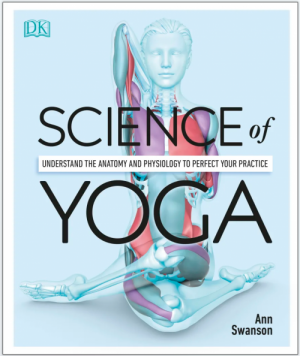
Science of Yoga: A book review
In the grand scheme of science enquiry, yoga research is in its infancy. However, now is an exciting and pivotal point in the field, with a remarkable increase in the quality and quantity of yoga research papers in the past few decades; the evidence supporting yoga’s benefits continues to grow rapidly.—Ann Swanson
I was in search of evidence-based, empirical research about yoga. This is a search I have done every few months over the past 10 years. In 2009 as I launched Prasada, there were very few articles. At that time I was asked, more than once by some of our corporate clients, if yoga was a religion. How quickly we have come to a new understanding of yoga.
More than poses
Today if I stacked all of the articles that I have printed since I began this search to scientifically “validate” yoga it would be a respectable pile. The research has accumulated from the fields of psychology, neuroscience, physiology and mindfulness. These include studies about yoga as a treatment for pain, arthritis, heart disease and diabetes.
If I added my favorite yoga books with those articles, it would be a tower of paper in danger of falling over. If I took a magic wand and reached up to tap the very top of that pile, in a magical swirling Harry Potter moment, this book, Science of Yoga, would appear as the distillation of that pile of information.
What I like about it
First, this book is a DK book of the same genre of the Eyewitness books I would read with my children when they were young. Like my children, I am a visual learner and with more pictures than words, I was immediately captivated.

Ann Swanson, the author, begins by sharing that she is the daughter of a NASA scientist and the kid who always had a notebook to take notes, draw charts, record observations and capture her infinite questions. I love her analytical approach to human anatomy, and she does a fantastic job of reviewing 11 body systems in the first section of the book to set the framework. There is an icon for every system and these are used in the second section where she explores the asanas (yoga poses).
The poses are divided into four sections; seated, standing, inversions and floor. Each pose has a first page to show the muscles and alignment and then a second spread to get a closer look. While tree pose is mainly a balancing posture the hip abductors are also very active. I like the detail that she goes into to show what is happening from different angles and inclusion of the breath and concentration.
The last section, Q&A’s, is the one I love the most. Swanson here answers questions including, Why do my joints pop? How does meditation affect my brain as I age? How does stress impact my health and how does yoga help? (See the box below for her answer to that one.)
Ancient wisdom and science
She also is the first to weave the nervous system, the vagus nerve and the gunas, which are part of the ancient wisdom of yoga, together and cites the article from a 2018 study published in the Frontiers in Human Neuroscience. Here she explores how stress fits into the traditional yogic philosophy. This is not a book to read once, but one that I know will be close at hand as I continue my own studies of stress and yoga.
We are in a new era for yoga. What the ancients have known for thousands of years has been under the metaphorical microscope of science for the last few decades, and now we are revealing the how of the mystery of yoga. She also guides us on how to assess if a yoga study is reliable.
Yet, even in her unearthing of the science foundation of yoga Ann remains, like so many scientists who behold what they study with high regard, a student filed with wonder, awe and appreciation for this practice. This interweaving is the real brilliance of this book and worth the investment of having it in your library. I predict it will be a welcome companion for new yogis and seasoned practitioners alike.
Enjoy.
How does stress impact my health and how does yoga help?
Yoga is an effective tool for managing stress because it helps us regulate our emotional response to stressors by teaching us to become the observer of our thoughts and feelings, and through improving our mind-body connection. As a result, yoga can lead to more positive health outcomes.
Leave a Comment